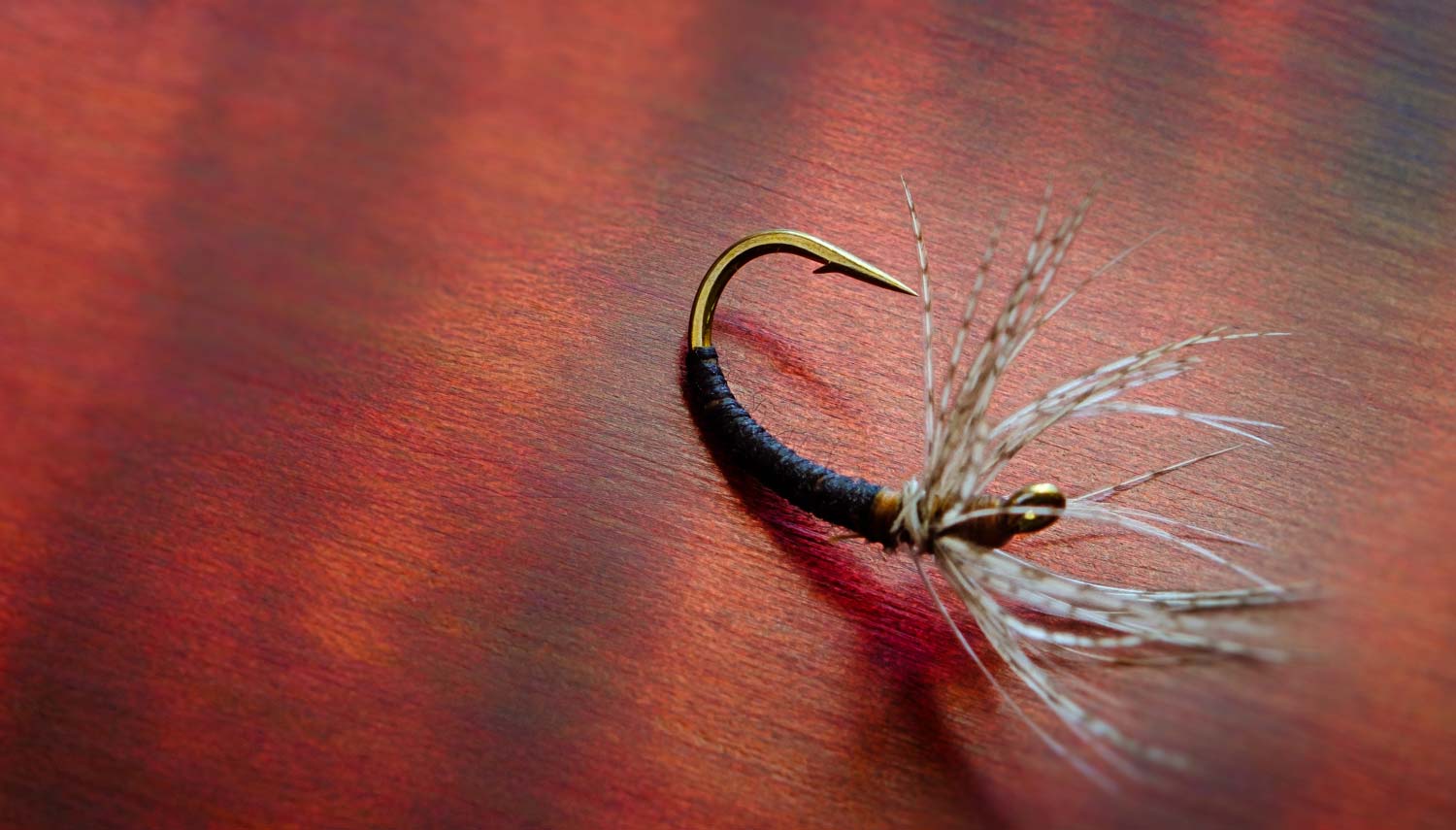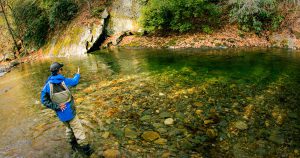
Photo by Louis Cahill
By Mark Roberts
I’d like to share just a little my insight about the Sasaki Kebari as I have learned to use it in Tenkara.
I have been a Single Hand Spey, and Switch fly fisherman for many years and added Tenkara about five years ago for what it has to teach me to become a better fisherman. Simplicity. Learning to do more with what I have, to fish different conditions. The very first time I used my new Tenkara rod and Sasaki Kebari was on a lake. A buddy of mine and I fished the entire shoreline of that lake with our single hand rods and traditional flies and got nothing. I took out my brand new Tenkara and put on my first Sasaki Kebari I tied and caught my first trout in one minute. Caught five more in the next hour.
The Sasaki Kebari can be used as a surface dry fly, as a subsurface wet fly, or as a nymph. The mechanics are that as either a surface or subsurface fly, it is important to have a rod with a sensitive and quite flexible tip. My rod is a larger 13 1/2’ stiffer Tenkara USA Amago, and I use it a lot fishing on the Deschutes River here in Oregon for Redsides. Even with its size and stiff backbone, the Amago has a very sensitive tip.
Typically, just tapping your index finger on the rods handle will immediately transfers that vibration into the fly, as long as you have a line without slack in it. For a surface fly, it looks like a bug fighting for its life, and sending shock waves out into the water quite a distance, which does attract fish.
For a surface fly, the Sasaki Kebari has three benefits, as I see it. Viewed from beneath, it looks like a generic bug with its wings out fluttering fighting for its life. With most Western traditional dry flies, the fisheye view produces just a silhouette of what appears to be a dead bug.
While fishing the Sasaki Kebari subsurface, it helps to act like a mini sea anchor in the current to create a line without slack, making it easier to feel in your hand and see in the rod tip if a fish is mouthing, or taking, the fly. The same index finger tapping will make the Sasaki Kebari look alive and pulsating in clear water. In colored water it can be sending out shock waves to attract fish from a distance. In a drift in colored water, it can feel much more like live food to a mouthing fish.
There are numerous different Tenkara style flies that were used in Japan in different regions of the country.
Sasaki Kebari style is just one, though the most popular world wide. The same style of fishing and Sasaki Kebari style of fly (pesca mosca) can be found in Italy for hundreds of years. One thing that history has shown is that a Sasaki Kebari fly is not mimicking a certain insect. It is mimicking many different types of insects, in different situations.
While it is common for man to see something of tradition and try to make it like something else, like the bright colorful attractor Sasaki Kebari (Umpqua’s) there is little evidence that it improves on the most basic and muted ties when fished properly. The Sasaki Kebari is very easy to learn how to tie with a minimum of materials, but technique and proper rod tip are the things that make it the effective fly it can be.
 While most Tenkara purists fish small streams with light level lines the length of the rod, it can be fished in every other method. I fish mine with a light level line when there is little wind and there is a hatch going off, with fish feeding near shore. I also use 1wt or 2wt floating fly lines in 20’, 30’, and 40’ lengths to fish on the swing on a large river like the Deschutes. Yes, the Amago will easily cast those long lines either false casting or Spey Snap-T. It also makes for a good nymphing rod, with a Kelly Galloup style Drop Shot leader setup, if you think about the mechanics of nymph fishing.
While most Tenkara purists fish small streams with light level lines the length of the rod, it can be fished in every other method. I fish mine with a light level line when there is little wind and there is a hatch going off, with fish feeding near shore. I also use 1wt or 2wt floating fly lines in 20’, 30’, and 40’ lengths to fish on the swing on a large river like the Deschutes. Yes, the Amago will easily cast those long lines either false casting or Spey Snap-T. It also makes for a good nymphing rod, with a Kelly Galloup style Drop Shot leader setup, if you think about the mechanics of nymph fishing.
There is much more to be said and learned about how to make the Sasaki Kebari fish/swim by how and where one puts the fly, and how to make it “swim” with the currents, and line manipulation, to dive to lower depths without the use of lead. The “One Fly” concept is more about doing more with one fly, than having only one style of fly. I think it makes me a better fisherman.
Here’s a great video of Tim Harris tying the Sakasa Kebari.
Mark Roberts Gink & Gasoline www.ginkandgasoline.com hookups@ginkandgasoline.com Sign Up For Our Weekly Newsletter!

Which came first; this fly or the British Funnel Fly…both seem to be tied the same?
Tenkara is about 700 years old as a method. My guess is the kebari style flies predate all western fly fishing.